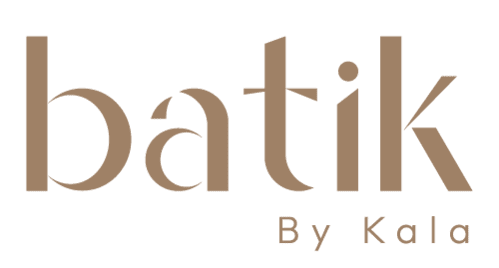Batik Malaysia is more than just a beautiful traditional textile art; it carries the rich cultural heritage of the region while facing modern challenges around sustainability and ethics. As the global demand for authentic batik grows, so does the responsibility to preserve the environment and uphold fair labor practices within the batik industry.
Environmental Impact and Sustainable Practices
Traditional batik production involves natural materials such as wax, dyes, and fabrics. However, the use of synthetic dyes and chemicals in some commercial batik manufacturing can lead to water pollution and hazardous waste. In Malaysia, there is an increasing push towards adopting eco-friendly alternatives—such as natural dyes derived from plants like indigo, turmeric, and sappanwood—that reduce the ecological footprint.
Moreover, sustainable batik production encourages the use of organic cotton and other biodegradable fabrics instead of synthetic textiles. Efforts to recycle water used in dyeing processes and proper waste disposal are critical steps taken by ethical batik producers to minimize environmental harm.
Fair Labor and Ethical Production
The art of batik is traditionally handcrafted, involving skilled artisans who painstakingly create intricate patterns. Unfortunately, some mass-produced batik items in the market compromise ethical labor standards by relying on exploitative work conditions and low wages.
Promoting fair trade practices in Malaysia's batik industry ensures that artisans receive just compensation for their craftsmanship. Ethical batik producers invest in community development by providing safe working environments, fair wages, and skill development opportunities, which empower artisans and preserve batik heritage.
Cultural Preservation and Social Responsibility
Sustainability in batik Malaysia is not only about the environment and labor rights but also about preserving an intangible cultural legacy. Supporting local artisans who maintain traditional techniques helps sustain this art form for future generations.
Consumers play a vital role by choosing batik products made with respect for nature and people, fostering a market that values cultural authenticity and responsible production.
Conclusion
As Batik Malaysia continues to captivate fashion and cultural enthusiasts worldwide, embracing sustainability and ethical concerns is crucial. By prioritizing eco-friendly materials, supporting fair labor, and preserving cultural heritage, the batik industry in Malaysia can thrive responsibly—honoring its past while safeguarding the future.
Empowering Artisans Through Sustainable Practices
Behind every vibrant batik piece lies the skilled hands of local artisans shaping their futures. Initiatives like Batik Boutique’s 2024 programs support 400 families, proving ethical practices drive real change.
Fair Wages and Community Impact
Since 2020, artisan wages surged 120% thanks to fair trade partnerships. Single-mother cooperatives now craft Kapten’s canvas lunch bags, turning skills into stable incomes. Batik Boutique employs 300+ makers, uplifting 1,500+ beneficiaries.
Collaborations and Government Support
The industry thrives with SC Malaysia’s MSME roadmap, linking makers to capital markets. Tax incentives for natural dyes spur innovation. MyCreative Ventures aims for a 50% living wage boost by 2025.
FAQ
What makes batik production sustainable?
Sustainable batik production uses natural dyes, eco-friendly fabrics like organic cotton, and minimizes waste and water pollution. It also involves processes that reduce harmful chemical use and supports environmental conservation.
Are all batik products made ethically?
Not all batik products are made ethically. Some mass-produced batik may involve unfair labor practices. It’s important to choose batik from producers who prioritize fair wages, safe working conditions, and artisan empowerment.
How can I identify ethically made batik from Malaysia?
Look for certifications such as Fair Trade or labels that highlight artisan-made, handmade, or eco-friendly processes. Supporting small-scale batik artisans or brands transparent about their production practices is also a good sign.
Why is cultural preservation important in the batik industry?
Cultural preservation ensures traditional batik techniques and patterns are passed down through generations, maintaining Malaysia’s heritage and supporting artisan communities who rely on this craft.
What environmental issues are associated with batik production?
The main issues include water pollution from synthetic dyes, chemical waste, and the use of non-biodegradable fabrics. Sustainable practices focus on natural dyes, safe waste disposal, and eco-friendly fabrics to address these concerns.
Can consumers contribute to sustainability in batik?
Yes! By choosing batik products made with sustainable materials and ethical labor, supporting local artisans, and spreading awareness about responsible fashion, consumers play a key role in promoting sustainability.
